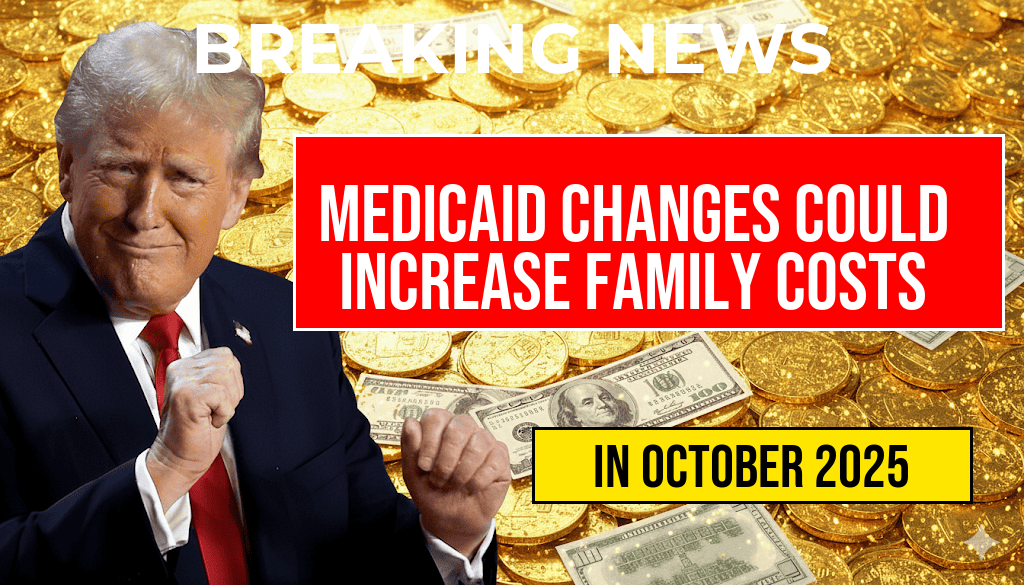Recent adjustments to Medicaid policies across several states are raising concerns among families about escalating healthcare costs. As some states implement stricter eligibility criteria and modify benefit structures, low-income households could face an increase of over $5,000 annually in out-of-pocket expenses. These changes threaten to widen the financial gap for vulnerable populations already burdened by rising medical bills, hospital fees, and prescription costs. Experts warn that such policy shifts may result in more families delaying or forgoing necessary care due to affordability issues, potentially leading to worse health outcomes and increased long-term costs for the healthcare system.
Medicaid Policy Reforms: What Families Need to Know
Medicaid, the joint federal and state program providing health coverage to over 80 million Americans, is undergoing significant policy shifts in multiple states. These reforms primarily aim to reduce program spending and tighten eligibility but may inadvertently increase financial barriers for recipients. Changes include increased premiums, stricter income verification, and reductions in covered services, which can significantly impact the amount families pay out-of-pocket each year.
Key Changes and Their Potential Impact
Increased Premiums and Cost-Sharing
- Several states have introduced or proposed monthly premiums for Medicaid enrollees, particularly for those with slightly higher incomes within the eligibility range.
- Cost-sharing requirements, such as copayments for doctor visits and prescriptions, are being expanded, leading to additional expenses for families already managing tight budgets.
Stricter Eligibility Criteria
- States are tightening income thresholds and requiring more frequent verifications, risking disenrollment for some recipients.
- Loss of Medicaid benefits can force families to seek coverage through more expensive private plans or skip care altogether, increasing out-of-pocket costs.
Reduction in Covered Services
- Some reforms involve narrowing the scope of covered treatments, including preventive services and certain specialty care.
- Patients needing these services may face significant bills if they cannot access Medicaid-covered options, further elevating expenses.
Financial Consequences for Families
Analysts estimate that these policy modifications could lead to an average additional annual out-of-pocket expenditure exceeding $5,000 for affected families. For households already struggling with medical bills, this increase can be catastrophic, forcing difficult choices between healthcare, housing, and other essentials.
| Change Type | Estimated Annual Cost Increase |
|---|---|
| Premium Increases | $1,500–$2,000 |
| Expanded Copayments | $1,000–$1,500 |
| Reduced Covered Services | $1,500–$2,000 |
Combined, these factors contribute to a significant financial burden, especially for families with chronic health conditions or those requiring ongoing medical attention. The result is a potential increase in uncompensated care costs for hospitals and clinics, further straining the healthcare system.
State-Level Variability and Broader Implications
While some states are implementing these reforms with the goal of reducing Medicaid expenditures, others maintain more generous policies. The divergence creates a patchwork of coverage that complicates health planning for families moving between states or relying on federal assistance programs. According to research from the Wikipedia entry on Medicaid, the differences in state policies can result in coverage gaps that disproportionately affect low-income populations.
Expert Opinions and Public Response
Healthcare advocates warn that the cumulative effect of these policy changes could undermine decades of progress in expanding access to care. Dr. Lisa Adams, a health policy researcher at the Kaiser Family Foundation, emphasizes that increased out-of-pocket costs often lead to delayed treatment, worsening health disparities. Meanwhile, families express concern over the unpredictability of healthcare expenses and the risk of medical debt.
Looking Ahead: Navigating the Changing Landscape
As states continue to adjust Medicaid policies, families are encouraged to review their coverage options carefully and explore assistance programs designed to mitigate costs. Some states offer subsidies or financial counseling to help enrollees manage new premiums and copayments. Advocacy groups are also urging federal oversight to ensure that changes do not disproportionately impact vulnerable populations.
For more information on Medicaid eligibility and recent policy updates, resources such as the Medicaid official site and state health department websites provide guidance tailored to specific regions.
Frequently Asked Questions
What are the recent Medicaid policy changes that could affect my family’s healthcare costs?
The recent Medicaid policy changes involve adjustments to eligibility criteria, coverage, and cost-sharing requirements, which may lead to increased out-of-pocket expenses for many families receiving Medicaid benefits.
How might these policy changes lead to an increase of over $5,000 annually in medical bills?
Due to stricter eligibility rules and increased cost-sharing obligations, families could face higher deductibles, copayments, and uncovered services, cumulatively adding over $5,000 a year in medical expenses.
Which families are most at risk of increased medical costs due to these policy changes?
Families with low incomes, multiple chronic conditions, or those relying heavily on Medicaid for healthcare coverage are most vulnerable to the increased out-of-pocket costs resulting from the policy modifications.
What can families do to prepare for potential increases in medical expenses?
Families should review their healthcare coverage, explore additional insurance options, and consider setting aside savings for medical emergencies to mitigate the impact of higher medical bills.
Where can I find more information or assistance regarding Medicaid policy changes and managing medical expenses?
Visit your state’s Medicaid office website or contact local healthcare assistance programs for updates, guidance, and resources to help navigate the recent policy changes and manage medical costs.






